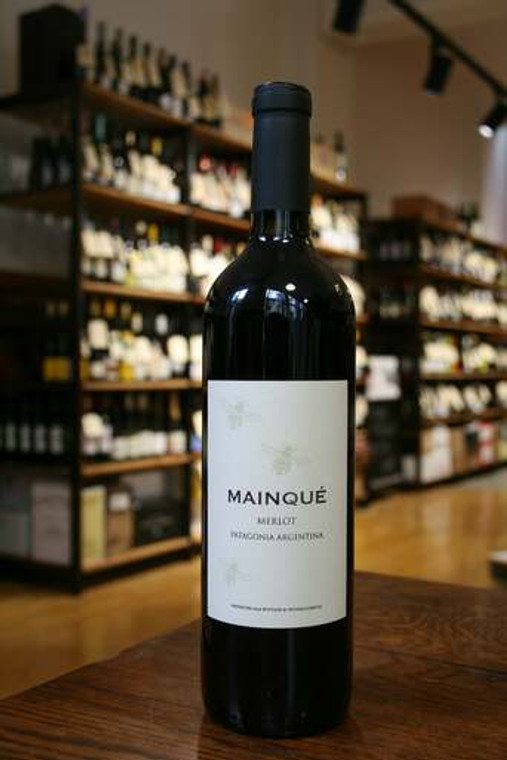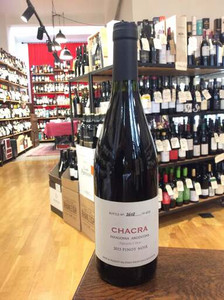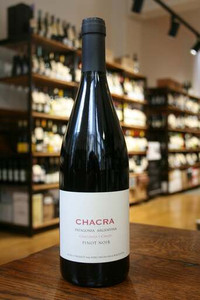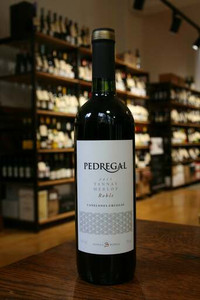"It’s a Merlot with a little more body, a little more heft, and a little more manliness, yet it also shows the suave lines of the estate’s Pinot Noir wines. Dark, almost brooding fruit, a subtle humidor of smokiness, and a tempting savoury meatiness make the biodynamically produced Mainque stand apart from the crowd."
--------THE PRODUCER--------
Bodega Chacra
Bodega Chacra is one of the leading wineries of Argentina located in the northern region of Patagonia. The winery was set up in early 2004 by Pierro Incisa della Rocchetta yet the two main vineyards he sources his fruit from were planted in 1932 and 1955 with both Pinot Noir and Merlot grapes. It is the age of these vineyards that allows for Pierro to produce some of the most concentrated, flavoursome and age-worthy wines in modern Argentina.

--------THE GRAPE--------
Merlot
Merlot is one of the most widely planted grapes in the world. It is often seen as second fiddle to Cabernet Sauvignon but that is a misconception as it is actually planted more in Bordeaux than Cabernet Sauvignon is. It is known for its beautiful plummy aromatics and its soft texture which makes it a very important part in the classic 'Claret' Bordeaux blend.
--------THE REGION--------
Patagonia
The Río Negro originates from the junction of two meltwater rivers, Limay and Neuquén, and then crosses the stepped plains of the province through a forest about 3 kilometers (1.9 mi) long at the Alto Valle, a 75-mile-long, 5-mile-wide stretch along the river. The elevation at the valley is between 290 meters (952ft.) and 330 meters above sea level.
In the 1820s, British colonists dug irrigation channels on both sides of the river, forming a green belt suitable for agriculture. Soils at the river banks are mainly acidic, sandy loams and silty loams, while in the dry plain, extensive gravel mantels known as ‘Rodados Patagónicos’ or ‘Patagonian Shingle Formation’ can be found.
A high iron concentration before the Río Negro produces heavy red clay soils in the “Mainqué” area. Another part of the estate is encompassed by “barda” soils: eroded steep slopes with scarce vegetation.
CLIMATE
Winds are mainly from the southeast quadrant. They grow cold in winter, reaching -5°C (23°F) due to the snow that covers the Andes, but become less cold the rest of the year, with temperatures ranging from 10°C (50°F) to 35°C (95°F). In addition, these winds are characteristically dry in the region, as the uplift of air masses through the Andes produces
precipitation, eliminating the humidity swept along from the Pacific. The rain shadow effect and descending cool mountain air make the desert quite windy as well; gusts of wind can reach 44mph. Poor precipitations also contribute to aridity: averages of annual rainfall in the area range from 150mm (5.9 in) to 200 mm (7.88in) per year.
As a result, soil genetic horizons are quite drained and have poor organic matter, but these conditions contribute to the health of the crops in the High Valley, while growers are able to control the water intake through irrigation.
Classic desert conditions of warm days and cold nights extend the growing season and slow the ripening of grapes. The combination of high winds, constant sun, little rainfall, and alluvial soils tend to yield smaller and thicker grapes, leading to high concentrations of sugar and natural acidity.










